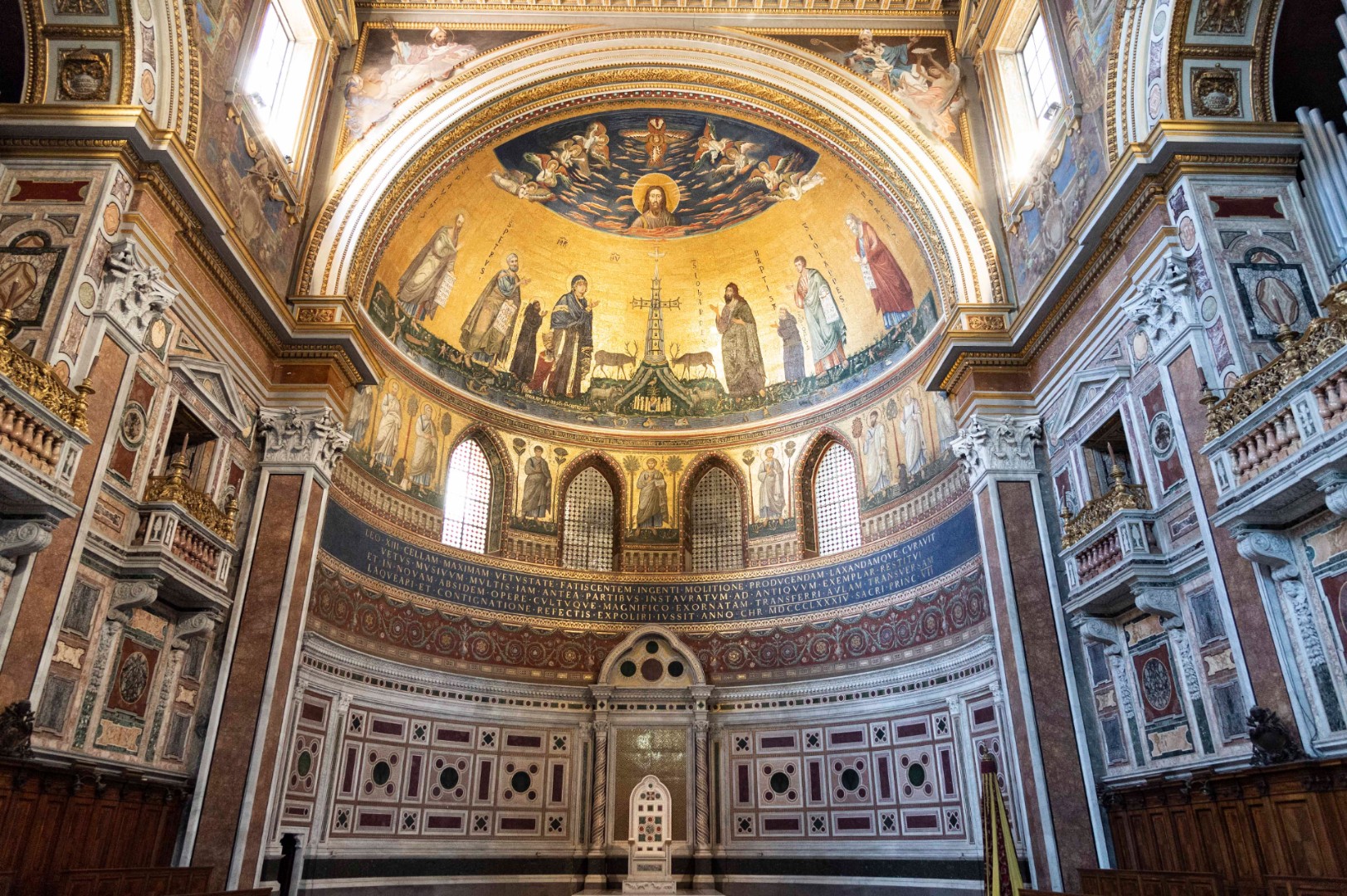The apse is today recessed from the old one. Indeed, in 1884 Leo XIII wanted to enlarge the presbytery. According to the questionable artistic intervention criteria of the time, the thirteenth-century mosaic was restored, keeping its iconography unchanged, but irreparably corrupting its artistic dimension. The mosaic had been commissioned by Pope Nicholas IV (1288-1292), the first Franciscan to be elected pope, from Jacopo Torriti, who in turn modified the fifth century mosaic.
The apsidal mosaic depicts at the top the face of Christ – which according to tradition miraculously appeared in Saint John – and below him the dove of the Spirit. The hand of the Father was probably originally represented above Christ’s face, to compose the Trinity.
All the Mercy of the Trinity is revealed in the jewelled cross below, which seems to be enveloped in light that becomes water. In the Baptism of Jesus, it is announced that He is the beloved Son of God. Through our Baptism, we are united with Him so that we too become children of God.
Indeed, at the base of the Cross there is a heavenly mountain from which water gushes, divided into four rivers, recalling the fruitfulness promised in Genesis and realized in the heavenly Jerusalem (Gen 2:10-14 and Rev 22:2). Two deer drink from the water, along with an infinite number of creatures who draw life from the Trinity revealed in the cross. In short, it is the entire Church, sacrament of humanity, who drinks from the wellspring of life.
The Church is also represented by the jewelled wall of the heavenly Jerusalem, protected by the Archangel Michael who is under the cross. The apostles Peter and Paul are on the gilded towers, while at the centre we see the Arabian Phoenix, medieval symbol of immortality.
At the left of the cross, Our Lady intercedes for the kneeling Pope Nicholas IV, who is followed by Saint Francis, smaller in size, accompanied by the Saints Peter and Paul; at the right there is the Baptist, performing the deesis, followed by Saint Anthony, also small in size, and Saints John and Andrew.
Lower down, there are the other nine apostles and two small figures in Franciscan habit, representing Jacopo Torriti, the mosaic artist, and Jacopo da Camerino who helped him, evidently artist friars.



